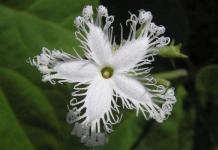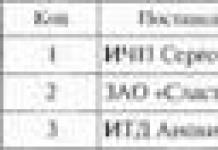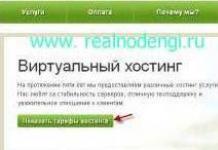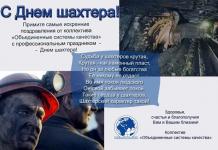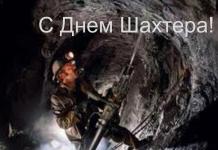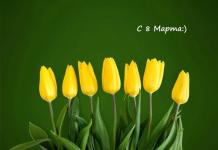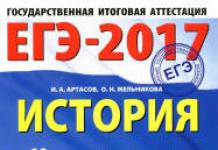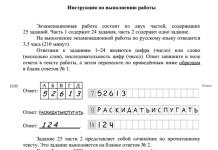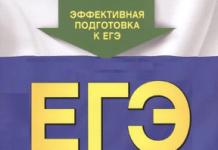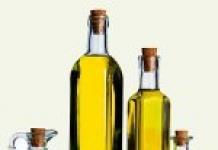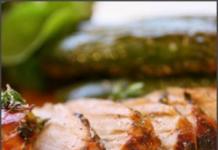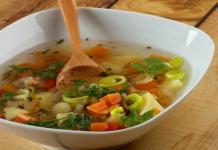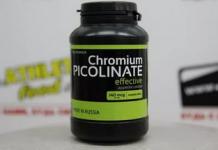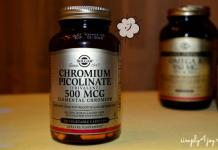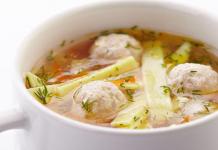STATE STANDARD OF THE USSR
GOST 14202-69 USSR STATE COMMITTEE ON STANDARDS MOSCOW
USSR STATE STANDARD
By the Decree of the Committee of Standards, Measures and Measuring Instruments under the Council of Ministers of the USSR dated February 7, 1969 No. 168, the deadline for introduction was established
1. This standard applies to the identification coloring, warning signs and marking plates of pipelines (including fittings, fittings, fittings and insulation) in designed, newly built, reconstructed and existing industrial enterprises inside buildings, on outdoor installations and communications located on overpasses and in underground channels in order to quickly determine the contents of pipelines and facilitate the management of production processes, as well as ensuring labor safety.
The standard does not apply to the identification coloring of pipelines and ducts with electrical wiring.
2. The following ten enlarged groups of substances transported through pipelines are established:
3) air;
4) combustible gases (including liquefied gases);
5) non-flammable gases (including liquefied gases);
6) acids;
7) alkalis;
8) combustible liquids;
9) non-flammable liquids;
10) other substances.
3. Identification coloring and digital designation of enlarged groups of pipelines must correspond to those indicated in the table
1. 4. The characteristics of the colors of the identification color must correspond to those specified in the appendix
1. 5. Fire-fighting pipelines, regardless of their content (water, foam, steam for extinguishing a fire, etc.), sprinkler and deluge systems in the areas of shut-off and control valves and at the points of connection of hoses and other fire extinguishing devices must be painted in red color (signal).
If it is necessary to indicate the contents of fire-fighting pipelines, it is allowed to additionally designate them by means of marking plates painted in the appropriate distinctive colors.
Table 1
| Substance being transported | Samples and name of colors of identification coloring | |
| Group number | Name | |
| 1 | Water | Green |
| 2 | Steam | Red |
| 3 | Air | Blue |
| 4 | combustible gases | Yellow |
| 5 | Non-flammable gases | Yellow |
| 6 | acids | Orange |
| 7 | alkalis | Purple |
| 8 | Flammable liquids | Brown |
| 9 | Non-flammable liquids | Brown |
| 9 | Other substances | Gray |
6. Identification painting of pipelines should be carried out continuously over the entire surface of communications or in separate sections.
The method for performing identification painting should be selected depending on the location of the pipelines, their length, diameter, the number of lines located together, safety and industrial sanitation requirements, lighting conditions and visibility of pipelines for maintenance personnel and the general architectural solution.
It is recommended to paint pipelines in sections in workshops with a large number and length of communications, as well as in cases where, due to the increased requirements for color rendering and the nature of the architectural solution of the interior, a concentration of bright colors is undesirable due to working conditions.
Identification painting over the entire surface of pipelines is recommended for use with a small length and a relatively small number of communications, if it does not worsen working conditions in the shops.
On outdoor installations, it is recommended to use identification coloring over the entire surface only in cases where this does not cause deterioration of operating conditions due to the effect of solar radiation on communications.
7. When applying identification coloring in sections to pipelines located inside industrial premises, it is recommended to paint the rest of the communication surface in the color of walls, partitions, ceilings and other interior elements against which the pipelines are located. At the same time, it is not allowed to paint pipelines between sections with an identification color adopted to designate other enlarged groups of substances.
8. When applying identification coloring in sections to pipelines located outside buildings, it is recommended to paint the rest of the communications surface in colors that help reduce the thermal effect of solar radiation on pipelines.
9. When laying communications in impassable channels and when laying communications without channels, areas of identification coloring on pipelines should be applied within the chambers and manholes.
10. Areas of identification coloring should be applied taking into account local conditions at the most critical communication points (at branches, at joints, flanges, at sampling and instrumentation points, at places where pipelines pass through walls, partitions, ceilings, at inputs and outputs from industrial buildings etc.) at least every 10 m inside production facilities and outdoor installations and every 30-60 m on external main routes.
11. The width of the areas of identification coloring should be taken depending on the outer diameter of the pipelines (including insulation):
- for pipes with a diameter of up to 300 mm - at least four diameters;
- for pipes with a diameter of more than 300 mm - at least two diameters.
With a larger number of parallel communications, it is recommended that the identification color areas on all pipelines be of the same width and applied at the same intervals.
With large diameters of pipelines, areas of identification coloring may be applied in the form of strips, with a height of at least 1/4 of the circumference of the pipeline.
The width of the strips must correspond to the dimensions established for pipelines of a given diameter.
12. To designate the most hazardous substances transported by properties, warning color rings should be applied to pipelines.
The colors of the identification color for warning rings must correspond to those indicated in Table. 2.
13. In cases where a substance simultaneously has several dangerous properties, indicated by different colors, rings of several colors should be applied to pipelines at the same time.
On vacuum pipelines, in addition to the distinctive color, it is necessary to give the inscription "vacuum".
14. According to the degree of danger to human life and health or the operation of the enterprise, substances transported through pipelines should be divided into three groups, indicated by the corresponding number of warning rings in accordance with table 3.
15. Characteristics of signal colors must comply with those specified in Appendix 2.
16. The width of the warning rings and the distance between them must be taken depending on the outer diameter of the pipelines in accordance with drawing. 1 and tables 4.
17. With a large number of parallel communications, warning rings on all pipelines should be taken of the same width and applied at the same intervals.
table 2
Notes:
1. When applying yellow rings for identification coloring of pipelines of gases and acids, the rings must have black borders with a width of at least 10 mm.
2. When applying green rings for the identification color of water pipelines, the rings must have white borders with a width of at least 10 mm.
18. Gas outlet lines and venting to the atmosphere, depending on their contents, must have an identification color established for the symbolic designation of enlarged groups, with winding transverse rings of the corresponding signal color.
19. To designate pipelines with content that is especially dangerous to human health and life or the operation of an enterprise, and if necessary, to specify the type of danger, warning signs must be used in addition to color warning rings.
20. Warning signs should indicate the following substances: poisonous, flammable, explosive, radioactive, as well as other dangerous contents of pipelines (for example, substances that are hazardous when splashed, etc.).
21. Warning signs should be in the form of a triangle. Images must be black on a yellow background.
Table 3
| Group | Number of warning rings | Substance being transported | Pressure in kgf/cm2 | Temperature in °C |
| 1 | One | superheated steam | up to 22 | 250 to 350 |
| Hot water, saturated steam | 16 to 80 | St. 120 | ||
| Superheated and saturated steam, hot water | 1 to 16 | 120 to 250 | ||
| Combustible (including liquefied and active gases, flammable and combustible liquids) | up to 25 | From minus 70 to 250 | ||
| Up to 64 | From minus 70 to 350 | |||
| 2 | Two | superheated steam | Up to 39 | 350 to 450 |
| Hot water, saturated steam | 80 to 184 | St. 120 | ||
| Products with toxic properties (except for highly active toxic substances and fuming acids) | Up to 16 | From minus 70 to 350 | ||
| Combustible (including liquefied) active gases, flammable and combustible liquids | 25 to 64 | 250 to 350 and minus 70 to 0 | ||
| Non-flammable liquids and lares, inert gases | 64 to 100 | From 340 to 450 and from minus 70 to 0 | ||
| 3 | Three | superheated steam | Regardless of the pressure | 450 to 660 |
| Hot water, saturated steam | St. 184 | St. 120 | ||
| Potent toxic substances (SDN) and fuming acids | Regardless of the pressure | From minus 70 to 700 | ||
| Other products with toxic properties | St. 16 | From minus 70 to 700 | ||
| Combustible (including liquefied) and active gases, flammable and combustible liquids | Regardless of the pressure | 350 to 700 | ||
| Non-flammable liquids and vapors, inert gases | Regardless of the pressure | 450 to 700 |
Note. For substances that are dangerous in terms of properties or a combination of properties that are not included in this table, hazard groups should be established in agreement with the Gosgortekhnadzor authorities.
Table 4
22. The image of warning signs should be taken in accordance with Drawing 2 and Table 5

Toxic substances |
Flammable substances |
radioactive substances |
Explosives |
Caustic and corrosive substances |
Harmful and allergic substances |
Oxidizer |
Other hazards |
Table 5
| Options | a, mm |
| 1 | 56 |
| 2 | 52 |
| 3 | 74 |
| 4 | 105 |
| 5 | 148 |
23. In cases where the impact of aggressive flowing substances can cause a change in the hue of distinctive colors, pipelines should be marked with marking plates.
24. Labeling plates should be used to additionally indicate the type of substances and their parameters (temperature, pressure, etc.) required by the operating conditions. Marking plates on pipelines or on the surfaces of structures to which pipelines are attached must be marked with alphabetic or numeric inscriptions.
25. The inscriptions on the shields of pipelines must be made in a clear, well-recognized font and must not contain unnecessary data, little-used terms and incomprehensible abbreviations. The font for inscriptions is recommended to be taken in accordance with GOST 10807-78.
It is allowed to designate the type of substance by means of numbers in accordance with Appendix 3. The designation of the type of substance by means of chemical formulas is not allowed.
26. The direction of the flow of substances transported through pipelines should be indicated by the sharp end of the marking plates or arrows applied directly to the pipelines. The shape and size of the arrows must match the shape and size of the labels.
27. Marking shields must be of four types: 1 - to indicate the flow moving in both directions; 2 the same, in the left direction; 3 the same, in the right direction; 4 - to indicate the place of selection of the transported substance.
28. The dimensions of the camouflage shields must correspond to those indicated in Fig. 3 and in table. 6.




Table 6
| Size options | a, mm | b, mm | Height of letters h, mm | |
| one line | two lines | |||
| 1 | 26 | 74 | 19 | - |
| 2 | 52 | 148 | 32 | 19 |
| 3 | 74 | 210 | 50 | 25 |
| 4 | 105 | 297 | 63 | 32 |
| 5 | 148 | 420 | 90 | 50 |
29. Size options for labels, inscriptions and warning signs should be used mainly:
- 1-in laboratories;
- 2 and 3 - in industrial premises;
- 4 and 5 - on outdoor installations and outdoor trunk routes.
30. When attaching them to pipelines, warning signs should be placed together with marking plates.
31. The height of markings on pipelines should be taken depending on the outer diameter of the pipeline in accordance with drawing. 4 and table. 7.

Table 7
| Size options | Outer diameter D, mm | Height of letters h, mm | |
| one line | two lines | ||
| 1 | up to 30 | 19 | - |
| 2 | 81 to 160 | 32 | 19 |
| 3 | 161 to 220 | 50 | 25 |
| 4 | 221 to 300 | 63 | 32 |
| 5 | St. 300 | 90 | 50 |
The color of markings and arrows indicating the direction of flow applied to pipelines and marking plates should be white or black, taking into account the greatest contrast with the main color of the pipelines.
The color of the inscriptions when applied against the background of identification coloring is taken:
- white-on green, red and brown background;
- black on blue, yellow, orange,
- purple and gray background.
32. The size of labels, inscriptions and warning signs should be selected depending on the distance from which they should be perceived by personnel associated with the operation of pipelines in accordance with drawing. 5 and tab. 8.
33. Paint and varnish coatings for identification painting, marking plates and warning signs must be carried out in accordance with the current standards for paintwork materials and coatings, depending on the material of pipelines or the insulation protecting them and operating conditions, as well as the cost of paint and varnish coatings and the technology of their application.
34. Paints and varnishes used for identification painting, marking plates and warning signs must meet the requirements of the relevant standards, as well as technical documentation approved in the prescribed manner.
35. When preparing surfaces for painting, applying and drying paint and varnish coatings, the safety regulations and fire prevention measures provided for by the current fire regulations and rules must be observed.
36. In heated and ventilated industrial premises without aggressive environments, it is recommended to carry out the identification coloring of pipelines, marking plates and warning signs with pentaphthalic enamels of grades PF-115 according to GOST 6465-76, PF-133 according to GOST 926-82 and other brands according to the technical documentation approved according to established order.
It is recommended to paint fire-fighting pipelines and equipment with red enamel according to the technical documentation approved in the prescribed manner.
37. Identification colors and signal colors are allowed to be accepted in accordance with the following standards of the color standard card index:
- green #343-344;
- red #10-11;
- blue #423-424;
- yellow #205-206;
- orange #101-102;
- purple #505-506;
- brown #647-648;
- gray #894-895.
Required shades of purple and brown in accordance with the samples of Table. 1 can be obtained by adding white paint.
38. The identification coloring of pipelines and the color finish of marking plates and warning signs should be periodically renewed, taking into account the provision of clear visibility of colors, images and inscriptions. The coloring should be even, without streaks, wrinkles, spots and should not peel off.
39. Marking plates, inscriptions and warning signs should be located taking into account local conditions at the most critical communication points (at branches, at junctions, at points of selection, at valves, gate valves, valves, gates, control devices, at places where pipelines pass through walls , partitions, ceilings, at inputs and outputs from industrial buildings, etc.). Marking plates, warning signs and inscriptions on pipelines should be located in well-lit places or illuminated to ensure their clear visibility, while light sources should not obscure the images and inscriptions, as well as dazzle personnel when observing them.

Table 8
It is recommended to take the lowest illumination at critical points of communication when labeling plates, inscriptions and warning signs are located in them at 150 lux with fluorescent lamps and 50 lux with incandescent lamps.
40. In all industrial premises where there are pipelines, in places that are well accessible for viewing, identification coloring schemes for communications with a deciphering of distinctive colors, warning signs and digital designations adopted for marking pipelines should be hung out.
X>0.526-0.683y
x<0,410-0,317у
y>0.282+0.396x
at<0,547-0,394x
■ GOST R 12.4.026-2001. Signal colors, safety signs and signal markings. Purpose and rules of application. General technical requirements and characteristics. Test methods.
4.68. Depending on the purpose of the pipeline and the parameters of the medium, the surface of the pipeline must be painted in the appropriate color and have markings in accordance with the requirements of the "Rules for the Design and Safe Operation of Steam and Hot Water Pipelines" of Gosgortekhnadzor.
Coloring, symbols, letter sizes and location of inscriptions must comply with GOST 14202. Plate heat exchangers should be painted with heat-resistant enamel.
■ SP 90.13330.2012. Set of rules. Thermal power plants. Updated version of SNiP II-58-75 (approved by Order of the Ministry of Regional Development of Russia dated June 30, 2012 No. 282).
9.1.14. The coloring of premises and equipment should be designed in accordance with GOST 14202 and GOST R 12.4.026, taking into account the color scheme of interiors and facades.
9.1.15. For structures of all kinds, corrosion protection should be provided in accordance with the requirements of the Code of Practice for Corrosion Protection.
For metal structures, if necessary, fire protection, structural or with the use of OZS, should also be provided.
When using OZS for fire protection of load-bearing metal structures, the design documentation should indicate:
Fire resistance limit of structures;
OZS Fire Efficiency Group;
Name of the OZS, designation of technical specifications and fire safety certificate;
The thickness of the OZS layer corresponding to the fire retardant efficiency group, taking into account the reduced thickness of the structure section;
Permissible types (grades) of soils according to the fire safety certificate and coating
(decorative and protective) compositions specified in the technical specifications or agreed with the developers of the OZS.
Works on the application of OZZ should be carried out in accordance with the PPR developed by a specialized organization involved in the implementation of these works.
9.4. Depending on the purpose of the pipeline and the parameters of the medium, the surface of the pipeline must be painted in the appropriate color and have markings in accordance with the requirements of PB 03-75 of the Gosgortekhnadzor of Russia.
Coloring, symbols, letter sizes and location of inscriptions must comply with GOST 14202.
2.2.1. All hot parts of the equipment, pipelines, tanks and other elements, touching which can cause burns, must be thermally insulated. The temperature on the insulation surface at an ambient temperature of 25 ° C should not exceed 45 ° C. The color, symbols, letter sizes and location of the inscriptions must comply with the Rules for the Design and Safe Operation of Steam and Hot Water Pipelines and GOST 14202-69 “Pipelines of industrial enterprises . Identification painting, warning signs and labels.
■ TI 34-70-042-85. Standard instruction for the operation, repair and control of station pipelines of network water (approved by the Main Technical Directorate for the Operation of Energy Systems on July 2, 1985) (RD dated July 02, 1985 No. 34-70-042-85; TI dated July 02, 1985 No. 34.39.501; CO (Standard of the organization) dated July 02, 1985 No. 153-34.39.501).
4.2.11. Coloring (color, sizes of colored rings) and inscriptions (letter symbols, sizes of letters and numbers) on pipelines must comply with the rules of the USSR Gosgortekhnadzor and GOST 14202-69.
4.2.12. The following inscriptions must be made on the main network pipelines:
Line number (Roman numeral);
An arrow indicating the direction of movement of the working environment;
Letter designations of the coolant (supply pipeline - P.S., return pipeline - O.S.).
4.2.13. On the network and make-up pipelines within the heat-preparation plant, the following must be applied:
Arrows indicating the direction of movement of the working environment;
Letter designations of the coolant (network water - S.V., make-up network water - V.P.).
Letters and numbers are in print. The inscriptions are applied with paint that is clearly visible against the background of the main color of the pipeline. It is not allowed to place an inscription on colored rings.
4.2.14. The number of inscriptions on the same pipeline is not standardized. The inscriptions must be visible from the valve control points. In the places where the pipeline exits and enters another room, as well as at the entrance and exit of the impassable channel, inscriptions are required.
Below are answers to the most common questions about marking pipelines for industrial and civil facilities.
What color should the pipelines be painted in the central heating station, ITP, boiler room?
According to GOST 14202, the marking of pipelines does not depend on the object, but depends on the substance in the pipeline.
Pipelines with the transported substance WATER are painted green, STEAM - red, AIR - blue, GAS - yellow, ACIDS - orange, ALKALINE - purple, LIQUIDS - brown, OTHER - gray.
How to mark pipelines in the central heating station, ITP, boiler room?
The most common substances in the pipelines of the central heating substation/ITP/boiler rooms are water, steam, and gas.
The pipeline with water should be painted green, with steam - red, with gas - yellow. Identification coloring is allowed to be applied in sections.
It is also necessary to indicate the name and direction of movement of the substance using or . Their color must be the same as that of the identification markings. The locations of the shields are regulated by regulatory documentation.
What color should the hot/cold water/coolant pipes be painted?
All pipelines transporting substances whose main component is water are painted green in accordance with.
How, according to regulatory documentation, to distinguish the color of the supply pipeline from the return pipeline in the central heating station, ITP, boiler room?
If you mark the pipelines in accordance with, then the supply and return pipelines are painted green (if the coolant is water).
To identify the supply and return pipelines, appropriate designations with the direction of movement and the inscription should be used, for example “HEATING CARRIER SUPPLY”
Is it correct to mark the coolant supply / return pipelines with yellow and brown rings on a green background?
The requirement to mark the supply pipeline of the heating network with a yellow ring on a green background, and the return pipeline - with a brown ring on a green background, is borrowed from the now inactive "Typical instructions for the operation, repair and control of stationary pipelines of network water RD 34.39.501, TI 34-70-042- 85" and was valid only for network water pipelines that are on the balance sheet of power plants.
The current regulatory documentation for marking pipelines with coolant refers exclusively to the requirements of GOST 14202.

How to mark gas pipelines correctly?
Pipelines transporting any gases are painted yellow in accordance with.
Specify the name of the gas and the direction of movement by means of or .
It is also necessary, depending on the parameters of the gas, to apply red or yellow warning rings (Table 3, ), and if the gas has a dangerous property (flammability, toxicity, oxidizing agent), then an appropriate hazard sign must be applied.
How to mark steam pipelines?
Steam pipelines must be painted red and put on a red shield with the name and direction of its movement.
If the pressure in the steam pipeline is more than 1 kgf / cm² and the temperature of St. 120C, a yellow warning ring must be applied over the paint. With an increase in steam parameters, the number of applied rings increases (see Table 3
GOST 14202-69 has the status of a valid document.
What materials should be used when marking pipelines in accordance with GOST 14202-69?
There are also no documents prohibiting marking with self-adhesive tapes and PVC-based markers.
Moreover, the use of self-adhesive materials is more expedient (generally accepted all over the world) - more convenient, faster, more accurate, allows you to more accurately comply with the important requirements of GOST for color, size, font and shape.
The rules set out in GOST 21.205–93, regulate exactly how alphanumeric characters should be applied on the drawings pipeline designations plumbing systems that relate to external networks of heat supply, sewerage and water supply, as well as to internal water and sewer networks, heating networks, ventilation and air conditioning systems.
| Alphanumeric designation | Name |
| Water pipes | |
| B0 | General designation of the water supply |
|---|---|
| IN 1 | Domestic and drinking water supply |
| IN 2 | Fire water supply |
| Industrial plumbing | |
| IN 3 | General designation of industrial water supply |
| AT 4 | Plumbing of circulating water supply |
| AT 5 | Circulating water pipeline, return |
| AT 6 | Soft water plumbing |
| AT 7 | For river water |
| AT 8 | For river clarified water |
| AT 9 | For underground water |
| Sewerage | |
| K0 | General designation of the sewer |
| K1 | domestic sewerage |
| K2 | Rain sewer |
| industrial sewerage | |
| K3 | General designation of industrial sewage |
| K4 | Sewerage for mechanically polluted waters |
| K5 | sludge sewerage |
| K6 | Sewage for sludge-containing waters |
| K7 | For chemically polluted waters |
| K8 | Sewerage for acidic waters |
| K9 | For alkaline waters |
| K10 | For acidic waters |
| K11 | For cyanide waters |
| K12 | For chromium-containing waters |
| Heat pipe | |
| T0 | General designation of the pipeline |
| For heating, ventilation, air conditioning and technical processes | |
| T1 | Supply pipeline |
| T2 | Return pipeline |
| Pipeline for hot water supply | |
| T3 | Server |
| T4 | circulation |
| Hot water for technological processes | |
| T5 | Supply pipeline |
| T6 | Return pipeline |
| Steam heating | |
| T7 | Steam pipeline |
| T8 | Condensate line |
Note:
For those pipeline systems of sewerage and water supply that are not provided for in the table, designations must be adopted by establishing a serial numbering that is a continuation of the one indicated in the table.
If an industrial or domestic drinking water supply system simultaneously performs the role of a fire-fighting one, then it is assigned exactly the same number as the industrial or domestic drinking water supply. At the same time, an appropriate explanation is applied to the drawing.
Pipeline
In modern technology, pipelines are called such devices that are designed to transport a variety of liquid, gaseous and granular media. The main components of pipeline systems are: straight pipes that are tightly interconnected; hangers and supports; control and measuring equipment; shut-off and control devices; fasteners; seals and gaskets; means of automation.
In addition, the elements of pipeline systems also include the materials necessary to ensure effective protection of all the above components from the harmful effects of low and elevated temperatures, as well as from electrochemical corrosion.
The locations of the elements of pipeline systems are their branches, turns, as well as transitions to a different diameter. They serve to ensure a long service life of the system as a whole, as well as the tightness of the entire structure. Practice shows that almost no pipeline system is implemented without such elements as bends, tees and transitions.
Liquid Properties
Liquids are those substances that are in a liquid state of aggregation. It, in turn, is intermediate between the aggregate state of solid and gaseous. The liquid also has a property that is not found in any other state of aggregation: it is capable of changing its shape under the influence of tangential mechanical stresses within practically unlimited limits. In this case, mechanical stresses can be very small, and the volume of the liquid remains unchanged.
Another important property inherent in all liquids is surface tension. Neither gases nor solids have it, but it is explained by the following reasons: due to the fact that the balance of the forces acting on the molecules of the surface is disturbed, a certain new resultant force directed inside the substance appears. This explains the fact that the surface of a liquid is always "stretched". If we consider this situation from the point of view of physics, then it can be argued that surface tension is nothing but the force due to which the molecules of a liquid do not move from its surface to the deep layers. It is the force of surface tension that explains the shape of falling drops of any liquid.
Below are answers to the most common questions about marking pipelines for industrial and civil facilities.
What color should the pipelines be painted in the central heating station, ITP, boiler room?
According to GOST 14202, the marking of pipelines does not depend on the object, but depends on the substance in the pipeline.
Pipelines with the transported substance WATER are painted green, STEAM - red, AIR - blue, GAS - yellow, ACIDS - orange, ALKALINE - purple, LIQUIDS - brown, OTHER - gray.
How to mark pipelines in the central heating station, ITP, boiler room?
The most common substances in the pipelines of the central heating substation/ITP/boiler rooms are water, steam, and gas.
The pipeline with water should be painted green, with steam - red, with gas - yellow. Identification coloring is allowed to be applied in sections.
It is also necessary to indicate the name and direction of movement of the substance using or. Their color must be the same as that of the identification markings. The locations of the shields are regulated by regulatory documentation.
What color should the hot/cold water/coolant pipes be painted?
All pipelines transporting substances, the main component of which is water, are painted green in accordance with.
How, according to regulatory documentation, to distinguish the color of the supply pipeline from the return pipeline in the central heating station, ITP, boiler room?
If you mark the pipelines in accordance with, then the supply and return pipelines are painted green (if the coolant is water).
To identify the supply and return pipelines, appropriate designations with the direction of movement and the inscription should be used, for example “HEATING CARRIER SUPPLY”
Is it correct to mark the coolant supply / return pipelines with yellow and brown rings on a green background?
The requirement to mark the supply pipeline of the heating network with a yellow ring on a green background, and the return pipeline - with a brown ring on a green background, is borrowed from the now inactive "Typical instructions for the operation, repair and control of stationary pipelines of network water RD 34.39.501, TI 34-70-042- 85" and was valid only for network water pipelines that are on the balance sheet of power plants.
The current regulatory documentation for marking pipelines with coolant refers exclusively to the requirements of GOST 14202.
How to mark gas pipelines correctly?
Pipelines transporting any gases are painted yellow in accordance with.
You must specify the name of the gas and the direction of movement using or.
It is also necessary, depending on the parameters of the gas, to apply warning rings of red or yellow color (table 3), and if the gas has a dangerous property (flammability, toxicity, oxidizing agent), then it is necessary to apply the appropriate hazard sign.
How to mark steam pipelines?
Steam pipelines must be painted red and a red shield with the name and direction of its movement must be applied.
If the pressure in the steam pipeline is more than 1 kgf / cm² and the temperature of St. 120C, a yellow warning ring must be applied over the paint. With an increase in steam parameters, the number of applied rings increases (see Table 3
GOST 14202-69 has the status of a valid document.
What materials should be used when marking pipelines in accordance with GOST 14202-69?
There are also no documents prohibiting marking with self-adhesive tapes and PVC-based markers.
Moreover, the use of self-adhesive materials is more expedient (generally accepted all over the world) - more convenient, faster, more accurate, allows you to more accurately comply with the important requirements of GOST for color, size, font and shape.
Crimping is not just a hydraulic test of the system. This is a whole series of measures aimed at preparing the system for the heating season. This includes the repair of emergency sections, the replacement (repair) of valves, and the verification of pressure gauges, cleaning filters and much more.
In this article I will describe the main points that representatives of regulatory authorities pay attention to. The following is not the ultimate truth, each inspector has his own cockroaches in his head. But the necessary minimum of work must be done in any case.
So let's go...
First, let's figure out what we will crimp. There are several options for connecting the building to the heating network. The first, most common option is when introductory valves are installed near the wall at the entrance from the city. With this option, the boundary of the division of responsibility is the flange of the inlet valve, for everything further (including the inlet valve), the owner of the building is responsible. Accordingly, the heating unit and the heating system of the building are pressed.
The second option is when the heating unit is located inside the building, and an internal heating main runs through the building from the inlet valves to it. With this connection option, you need to specify where the demarcation line passes. The “Heat Supply Agreement”, which is concluded between the owner and the heat supply company, will help us with this. This agreement has an appendix, which indicates where the demarcation line passes.
If the inlet valves are considered to be the demarcation boundary, we press three elements of the system: the internal heating main, the heating unit and the heating system. If the delineation of responsibility passes through the valves at the heating unit, naturally, we only pressure test the elevator (heat) unit and the heating system.
Pressure gauges
 Perhaps the first thing the inspector turns his attention to when accepting a pressure test is pressure gauges.
Perhaps the first thing the inspector turns his attention to when accepting a pressure test is pressure gauges.
Checking the pressure gauge
The pressure gauges must be checked every year. Verification is a check of the measuring device for the accuracy of the readings. If the pressure gauge readings exceed the allowable error, it must be sent for calibration or replaced. Calibration, in fact, is the adjustment of the pressure gauge, aimed at reducing the error in the accuracy of measurements.
After verification, the stamp of the Metrological Service is applied to the pressure gauge body.
 1. Month of the year (1, 2, 3, etc.), quarter (I, II, III, IV).
1. Month of the year (1, 2, 3, etc.), quarter (I, II, III, IV).
2. Sign of the State Standard.
3. The last digits of the year (here 2002).
4. Individual sign of the believer.
5. Code of the Metrological Service.
New pressure gauges are subject to verification only after 18 months, that is, one year after commissioning. But when checking, you must provide passports for these devices (they are included).
Pressure gauge connection

The pressure gauge must only be connected to a three-way valve or a ball valve with a pressure relief valve. Ordinary ball valves do not work.

Three-way faucets often leak. Tip: to avoid leakage, rotate the valve stem several times around its axis before installation. Thus, you will evenly lubricate the stem and the inner surface of the valve with grease, which was applied during assembly.
Where should the gauges be?

Regarding the installation site of pressure gauges, there is a whole bunch of standards (DBN V.2.5-39 -, SNiP 2.04.01 - Internal water supply and sewerage of buildings, SNiP 2.04.05 Heating, ventilation and air conditioning, SNiP II-35 Boiler installations). In simple words, I will say this: pressure gauges should be installed before and after any equipment that can affect pressure changes: on all outgoing and passing pipelines before and after shutoff valves, before and after control equipment, before and after mud collectors (to control its condition) and etc.
Another nuance that the inspector can pay attention to is the pressure gauge rating. In heat points, pressure gauges with a nominal value of up to 1.6 MPa (16 bar) should be installed.
thermometers

The sleeve (pocket) of the thermometer should go 2/3 into the pipeline, so that the immersed part is in the center of the flow.
 Shown here is a wrong gauge connection.
Shown here is a wrong gauge connection.
To ensure good thermal contact, the thermometer sleeve must be filled with mineral oil (GOST 8.586.5-2005 p.6.3.9.).
Washing of filters and mud collectors

Cleaning filters and mud collectors is a mandatory procedure in the process of preparing heating for the heating season. The process of flushing the sump is quite simple: the flange is untwisted, and all the dirt is cleaned out of the sump. The same goes for the oblique filter.
Elevator

The main requirement for the elevator assembly is the flushing of the cone (nozzle). The diameter of the hole in the cone is 5-7 mm (calculated individually for each building), if the cone clogs, the building will not receive the required amount of heat.
The elevator must be sealed. To flush the nozzle, the seal must be removed, but in order to avoid unnecessary questions, this must first be agreed with the inspector who will take the pressure test from you. After washing, the elevator is sealed again.
Often, inspectors require that a tag hang on the elevator with the diameter of the hole in the cone indicated on it.
Insulation and warning color rings on pipelines

All pipelines in the ITP (CTP) must be painted and insulated. Insulation should not hang in tatters, everything should be neat. Accounting units and elevators are also isolated.
The direction of movement of the coolant should be indicated on the pipeline with markers. To identify the contents of the pipes, warning colored rings are applied to them. For heating, green (main color) and yellow rings are used on the supply, green and brown on the return. The same marking is used for DHW. Drainage and cold water are indicated by green rings.
Shut-off valves
Shut-off valves must perform their main function - to block the flow of coolant. If there are valves on the thermal unit that “do not hold”, they must be replaced. Different parts of the system are pressure tested under different pressures, and if there is a non-working valve in the circuit, it will definitely show itself.
Reinforcement marking
Ideally, everything should look like this: the heating point should have a diagram showing numbered and marked inlet and outlet pipelines, shut-off and control valves, drain and drainage devices. The scheme must correspond to the current state of the system, that is, if changes have been made to the system, they must be displayed on the diagram.
All of the above devices must have tags with symbols corresponding to the symbols in the diagram (1,2 - shutoff valves on the supply and discharge pipelines, t1 and t2 - thermometers, P1 and P2 - pressure gauges, etc.).

In practice, in small heating points, inspectors do not always focus on this. The main thing is to make it clear what goes where, for example: “supply to the left wing”, “return from the right wing”, “supply to ventilation”, etc. But if everything is "feng shui" - this is an additional plus.
Revision of gate valves
Old-style wedge gate valves require additional attention during operation.
 Wedge valve device: 1 - wedge, 2 - cover, 3 - flywheel, 4 - seat, 5 - body, 6 - sealing ring, 7 - spindle, 8 - threaded sleeve, 9 - sleeve, 10 - stand, 11 - stuffing box flange , 12 - gland seal made of thermally expanded graphite.
Wedge valve device: 1 - wedge, 2 - cover, 3 - flywheel, 4 - seat, 5 - body, 6 - sealing ring, 7 - spindle, 8 - threaded sleeve, 9 - sleeve, 10 - stand, 11 - stuffing box flange , 12 - gland seal made of thermally expanded graphite.
In such valves, it is mandatory to carry out stuffing of the stuffing box every year. And during the year, in the event of a leak from the stuffing box, it is necessary to tighten the flange. If this is not done, the valve will become unusable.

To replace the gland packing, unscrew the nuts on the cap bolts, lift the flange, remove the old gland packing and fill in a new one. The seal is wound in rings around the spindle and pressed against the flange.
When tightening the flange, you need to be careful: if you overdo it, the cast-iron flange can burst, and its replacement is very problematic, in practice it is easier to change the valve completely.
The valve must show no signs of rust. The body must be painted black, the flywheel red, and the retractable spindle must be lubricated with grease.
Drainage

Heating points are supplied with a ladder for gravity water drainage, and if it is impossible to implement, a drainage pit with a pump (SP 124.13330.2012 Heat networks. Updated edition of SNiP 41-02-2003 p. 14.20). The pit is closed with a removable grate. The latest innovation is that the edge of the pit should be painted with yellow and black stripes.

If there is a safety valve in the TP, then it must be equipped with a drainage pipeline so that no one (or nothing) is injured in the event of a drawdown.
Outcome
There were cases when the inspector said in plain text that he would find ten comments on two meters of the heating unit. It doesn't matter that last year there were no such remarks. In the eyes of the regulatory authorities, an ideal system does not exist. But that's a topic for another conversation...
Marking of pipelines, in accordance with current standards, is carried out to identify the substance transported in it. Usually, the recognition of substances is carried out using color analyzers. Special identification rings, stickers with warning inscriptions can also be applied (this applies to hazardous substances).
Modern marking of pipelines, etc. is done only in accordance with GOST. The surface of the pipeline is painted in a certain color, special inscriptions are attached. Heat exchangers, as well as pipelines through which hot water or steam is supplied, are painted with heat-resistant enamel. It is necessary that all inscriptions exactly comply with the rules for the safe operation of steam and hot water. On the main lines, a number must be applied in Roman numerals, as well as an arrow showing the direction of movement of the transported substance. The same trunk number is applied to trunk branches. All inscriptions must be clearly visible, they must not be obscured by valves and gate valves.
According to GOST 14202 69, if the surface of the pipeline is covered with metal sheathing, the coloring of this sheathing is optional, but a symbol of its type and class of the transported substance can be applied to the pipeline. The coloring and inscriptions on these pipelines must strictly comply with the same standard.
All equipment carrying hot liquid or steam must be adequately insulated. This is done to avoid burns. The temperature at the surface of the insulation must not cause damage to the skin when touched.
The pipelines must have arrows showing the movement of the working fluid. All inscriptions must be visible and printed only. Highly visible serial numbers should also be applied to pumping units, valves, gates and other mechanisms. Also, pipes need appropriate markings, which should indicate their purpose. In this case, it can be easily identified.
All state standards are obligatory for observance by all subjects of housing and communal services, heat supply, regardless of their form of ownership. Failure to comply with such rules can lead to accidents, fires and other man-made incidents.
Reliable and simple reducer Ch-80
Worm gearboxes, such as the Ch-80 gearbox, carry out the transfer of forces most confidently and at the same time change the direction of transmission. Their use provides a significant reduction in the speed of rotation of the shafts.
RTI in household appliances
RTI (rubber products) are used not only in industry, but also in everyday life: without RTI it is difficult to imagine modern household appliances (refrigerators, washing machines, dishwashers, food processors, etc.) present in every home.
Gate valves with electric drive - convenience in the operation of the pipeline
The advantages of gate valves on an electric drive include: versatility, that is, shut-off equipment can be used in any pipelines; high flow shutoff speed; durability and reliability.
PVC electrical tape - the best of electrical tapes
The most common area where electrical tape is used is electrical insulation in everyday life, in industry and during construction work.
Plasma cutting machines - their features and benefits
At present, manual rollers are used for single production of bulk products, and for large-scale production, modern equipment equipped with automation is more suitable. In addition to bending flat sheet and metal profiles, the production of products requires metal cutting, and now such operations are carried out using high-precision equipment.
STP OmGUPS–1.13–04
Enterprise Standard
Approved and put into effect by order No.
Date of introduction 01.06.04
1 area of use
This standard establishes rules for the design of thermal circuits.
The requirements of the standard apply to student educational and final qualification papers performed at all departments of the university.
2 Normative references
GOST 2.780-96. ESKD. Conditional graphic designations. Working environment conditioners, hydraulic and pneumatic tanks;
GOST 2.781-96. Eskd. Conditional graphic designations. Hydraulic and pneumatic devices, control devices and instrumentation;
GOST 2.782–96. ESKD. Conditional graphic designations. Pumps and motors hydraulic and pneumatic;
GOST 2.784–96. ESKD. Conditional graphic designations. Elements of pipelines;
GOST 21.205–93. SPDS. Symbols for sanitary systems;
GOST 21.206–93. SPDS. Symbols of pipelines;
GOST 21.403–80. SPDS. Conditional graphic designations in schemes. Energy equipment;
GOST 21.404–85. SPDS. Automation of thermal processes. Conventional designations of devices and automation equipment in diagrams;
GOST 21.604–82. SPDS. Water supply and sewerage. External networks;
GOST 21.605–82. SPDS. Thermal networks. Working drawings;
GOST 21.606-95. SPDS. Rules for the implementation of working documentation for thermal mechanical solutions of boiler rooms;
GOST 21.609–83. SPDS. Gas supply. Internal devices. Working drawings;
STP OmGUPS–1.1–02. Works student educational and final qualifying. Basic provisions;
STP OmGUPS–1.3–02. Works student educational and final qualifying. General rules for the design of drawings;
STP OmGUPS–1.4–02. Works student educational and final qualifying. General rules for the implementation of schemes;
STP OmGUPS–1.11–03. Works student educational and final qualifying. Rules for the design of construction drawings.
3 Terms and definitions
3.1 Thermal scheme - a type of energy scheme, which, using conventional graphic symbols, shows the main and auxiliary equipment of a heat and power facility (boiler house, CHP, TPP, etc.), combined by pipeline lines for transporting heat carriers in the form of steam or water.
3.2 Depending on the main purpose, the thermal scheme can be structural, principal, connections (assembly).
3.2.1 Structural diagram - a diagram that defines the main functional parts of the product, their purpose and relationships. Structural diagrams are developed when designing products (installations) at stages preceding the development of other types of diagrams, and are used for general familiarization with the product (installation). In the thermotechnical literature, such a scheme is called a principle.
3.2.2 Schematic diagram (complete) - a diagram that determines the complete composition of the elements and the relationships between them and, as a rule, gives a detailed idea of the principles of operation of the product (installation). Schematic diagrams are used to study the principles of operation of products (installations), as well as during their adjustment, control and repair. They serve as the basis for the development of other design documents, such as wiring diagrams (installation) and drawings. In the thermotechnical literature, such schemes are called deployed.
3.2.3 Connection diagram (installation) - a diagram showing the connections of the component parts of the product (installation) and determining the pipelines by which these connections are made, as well as the places of their connections and input. Connection diagrams (installation) are used in the development of other design documents, first of all, drawings that determine the laying and methods of fastening pipelines in a product (installation), as well as for making connections, when monitoring, operating and repairing products (installations). In the thermotechnical literature, such a scheme is called a working scheme, it is usually performed in an orthogonal, and individual complex nodes in an axonometric image.
3.3 In the main inscription, the name of the circuit is indicated in full, for example: Thermal circuit.
3.4 The designation of the scheme should be composed of the letter "P" (energy scheme) and the number 1 (structural), 3 (principal) or 4 (installation).










